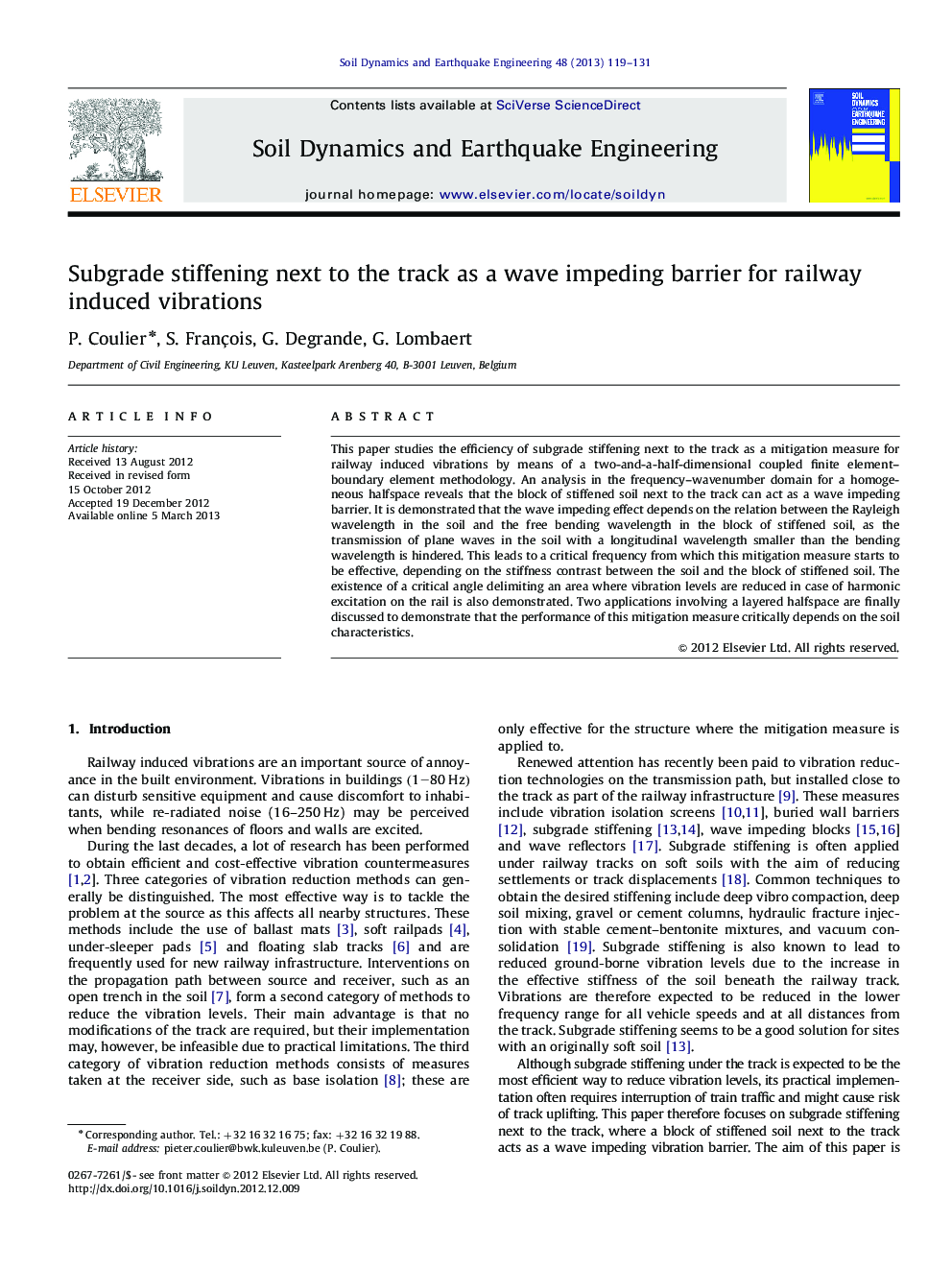| Article ID | Journal | Published Year | Pages | File Type |
|---|---|---|---|---|
| 304293 | Soil Dynamics and Earthquake Engineering | 2013 | 13 Pages |
This paper studies the efficiency of subgrade stiffening next to the track as a mitigation measure for railway induced vibrations by means of a two-and-a-half-dimensional coupled finite element–boundary element methodology. An analysis in the frequency–wavenumber domain for a homogeneous halfspace reveals that the block of stiffened soil next to the track can act as a wave impeding barrier. It is demonstrated that the wave impeding effect depends on the relation between the Rayleigh wavelength in the soil and the free bending wavelength in the block of stiffened soil, as the transmission of plane waves in the soil with a longitudinal wavelength smaller than the bending wavelength is hindered. This leads to a critical frequency from which this mitigation measure starts to be effective, depending on the stiffness contrast between the soil and the block of stiffened soil. The existence of a critical angle delimiting an area where vibration levels are reduced in case of harmonic excitation on the rail is also demonstrated. Two applications involving a layered halfspace are finally discussed to demonstrate that the performance of this mitigation measure critically depends on the soil characteristics.
► A block of stiffened soil next to a railway track can act as a wave impeding barrier. ► The performance of this mitigation measure depends on the stiffness contrast. ► The existence of a critical frequency and a critical angle is demonstrated. ► Design guidelines to assess the efficiency in an early design stage are presented.
